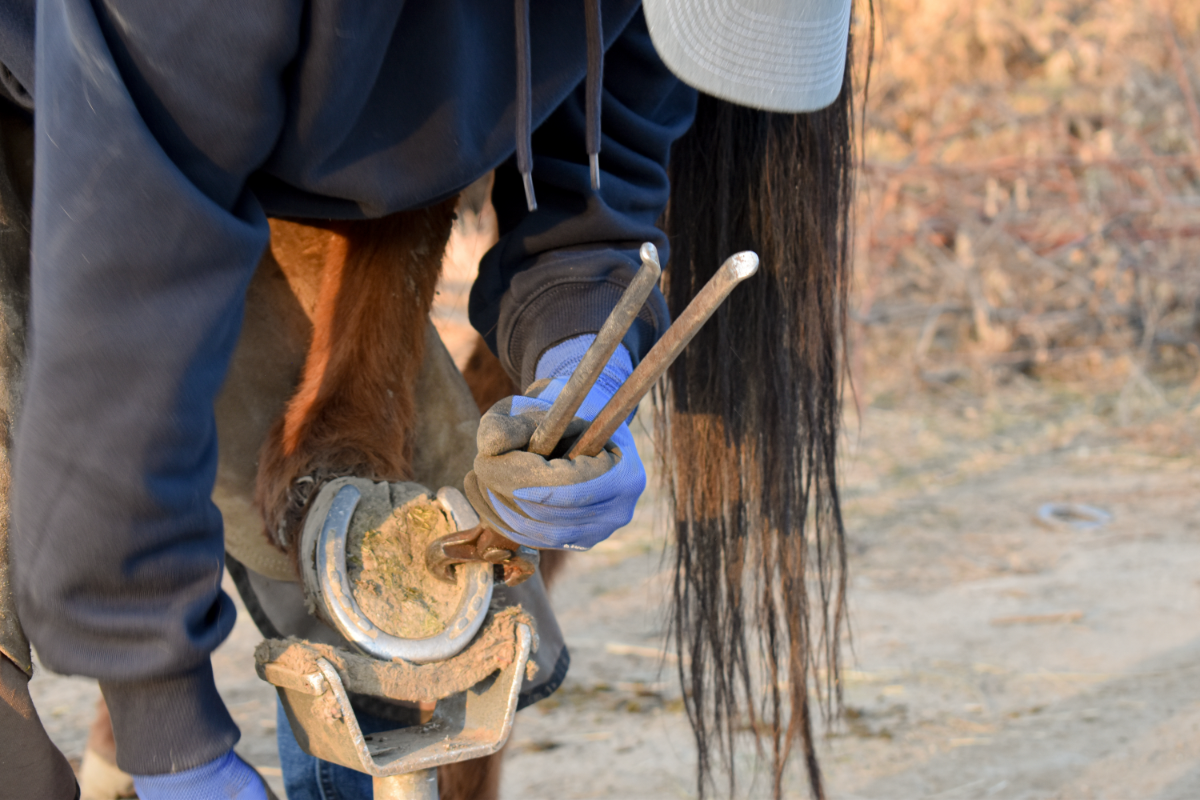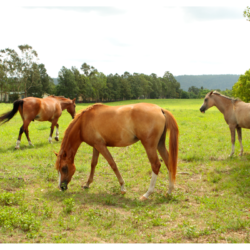Bleeding, a common but often misunderstood condition in horses, causes bruising under the hoof horn. These bruises cause significant pain and can lead to serious complications if left untreated. In this article, we will explore the causes, symptoms, diagnostic methods and treatments available for bleeding. We will also look at natural alternatives and preventative measures to ensure your horse’s health and well-being.
What causes this condition?
Bleeding is a bruise under the hoof horn, similar to a bruise under the fingernail after a shock. It can be recognised by a small reddish spot under the horse’s sole, resulting from a pocket of blood formed after an injury. This wound can often develop into an abscess if it is not treated correctly.
Bleeding can be caused by a number of factors. A violent blow or impact to the hoof, for example by stones, can cause these injuries. Horses with flat feet or thin soles are particularly prone. Poor shoeing or the use of orthopaedic shoes can also lead to bleeding.
The consequences of these injuries can vary. In general, bleeding is not considered a serious injury. However, if they become infected, they can have a significant impact on your horse’s health. A foot abscess, resulting from an untreated bleed, can cause acute lameness and intense pain. For competition horses, these injuries can require several months’ recovery, jeopardising their sporting career. In mares, serious foot injuries can prevent pregnancy because of the extra weight involved.
What are the symptoms of bleeding?
The main symptom of bleeding in horses is lameness. Although less painful than an abscess, the discomfort is nevertheless noticeable. The earthy, brown horn of the hoof often masks the redness associated with the contusion, making it difficult to detect visually. On light-coloured horns, a small pinkish spot can be seen. Over time, a bleb can develop into a haematoma or abscess if there is communication with the outside world, allowing bacteria to enter.
Bleaches are usually discovered when a horse is lame. The farrier uses a pair of tweezers to locate the painful area and make the diagnosis. There are three types of bleeding:
- Dry bleeding: identifiable by a red spot under the horn.
- Wet bleeding: a lesion with exudation of serum.
- Bleime suppurativa: a haematoma filled with pus.
Each type of bleeding requires special attention to avoid aggravating the injury. If your horse has unexplained lameness, it is essential to consult a farrier as soon as possible for a precise diagnosis and appropriate treatment.
How is it diagnosed?
Bleaches are diagnosed mainly by using a pair of foot tweezers. This tool is used to locate the painful area and determine the nature of the injury. Once the blema has been identified, the farrier proceeds with treatment by debriding the affected area. This process involves removing dead tissue to facilitate healing.
In addition to debridement, the affected area is protected. This may include the use of a fitted shoe to eliminate pressure on the affected area. Correctly fitted shoes are essential to prevent the recurrence of bleaches and to allow the horse to heal properly.
The farrier may also recommend additional care, such as specific wraps or veterinary products to speed up healing. It is important to follow the professional’s recommendations to ensure a full recovery and prevent future complications.
What treatments are available?
For non-infected bleaches, the simplest treatment is to rest the horse on soft ground until it heals. However, it is vital to consult a farrier regularly, approximately every 5 to 6 weeks for sensitive feet and every 8 weeks for other horses.
Veterinary products can also be used to prevent the infection developing and speed up healing. If you are comfortable using farrier’s tools, you can clean the sole to highlight the bleeding. If not, it is best to call in a farrier who will be able to locate and treat the bleeding.
Bleaches that have developed into abscesses require more intensive treatment. The farrier must drain the pus and treat the bacterial infection. It is essential to protect the treated area to prevent further infection. A wide sponge iron or a plank iron can be used in the case of multiple bleeds.
In all cases, the horse should be rested until the haematoma has completely healed. Regular monitoring and appropriate care are essential to prevent complications and keep your horse’s feet in good health.
What are the natural alternatives?
Natural treatments can be an effective alternative for treating bruising in horses. In homeopathy, arnica is often used internally to reduce inflammation and speed healing. Baths of Hypericum and Calendula mother tinctures diluted 1:3 can also be beneficial.
Phytotherapy offers options such as comfrey ointment or poultice. Plant tar is also an excellent product for maintaining the horn, especially in winter when the ground is muddy. It protects the hoof from damp and prevents rotting.
Essential oils such as eucalyptus and Italian helichrysum can be applied as a poultice with green clay. These oils have anti-inflammatory and healing properties, which can help to heal bruises.
Incorporate these natural alternatives into your horse’s care routine to maintain foot health and prevent complications. However, consult a vet before starting any treatment to check that it is appropriate for your animal’s state of health.
What are the means of prevention?
Preventing bruising is essential to ensuring your horse’s good health and performance. A regular care routine is crucial. Applying a black ointment daily can help maintain foot strength and prevent injury. This ointment sanitises the feet and prevents rotting, particularly recommended for horses kept in stalls or during wet periods.
Check your horse’s hooves and sole regularly and carefully for any signs of shock or injury. Prompt intervention can prevent serious suffering and the formation of an abscess.
Healthy feet bring comfort and performance. It is therefore essential to check their condition regularly and maintain healthy feet. By following these preventive tips, you can minimise the risk of bruising and ensure your horse’s well-being.





